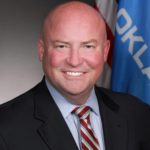By Oklahoma Institute for Child Advocacy CEO Joe Dorman
The leadership at the Oklahoma State Capitol last week reached an agreement on a Fiscal Year 2022 budget. In this proposal, key elements of this $8.3 billion spending package:
- Increases in common education funding by $171.8 million, or 6%, to a record high of $3.2 billion, triggering class size reductions in kindergarten and first grade.
- Boosts for the Rainy Day Fund (the state savings account) from less than $300 million today to more than $1 billion – approaching the high-water mark state reserves held before the pandemic began.
- Reduces the top personal income tax rate from 5% to 4.75% and the corporate income tax rate from 6% to 4%, placing both in the Top 10 for lowest rates in the country of states that levy those types of taxes.
- A film tax incentive with a $30 million cap to recruit more of the industry to the state.
- Expansion of broadband in underserved and unserved areas statewide through a $42 million tax incentive for providers (a priority for OICA).
- Aggressive recruitment of jobs to Oklahoma through $35 million in new economic development funding.
- Restoration of the refundability of the Earned Income Tax Credit (another priority for OICA).
- An Increase to $50 million for the Equal Opportunity Scholarship program cap ($25 million for public schools and $25 million for private schools).
- Full funding for expanded Medicaid for low-income Oklahomans (another OICA priority).
- Restores historic sales tax credit allowing OU Health to train 160 additional nursing graduates and nurse practitioners annually and 70 additional medical residents within three years.
In the agreement, the state’s Supplemental Hospital Offset Payment Program (SHOPP) fee will be increased from 2.5 percent to 3 percent, and then to 3.5 percent and 4 percent over the next two years. This will generate $37 million this year, $89 million next year and $135 million the following year. These funds will be used to offset the cost associated with Medicaid expansion until savings from reduced costs are generated.
Individual appropriation items of note include:
- $9.9 million for an in-patient pediatric behavior health unit at OU Health;
- $12.5 million for a reconstruction of the mental health services and addiction treatment fund created by State Question 781;
- $2 million to help address the state’s development disabilities services waiting list;
- $10.5 million for the state’s higher education system to emphasize workforce development of engineers, nursing, and teachers.
As with every budget before this, there are winners who receive funding and losers who are left out of further discussions. Overall, OICA sees much good that will come from enhancements included. We do not grade the annual budget bill as we understand some lawmakers have priorities not included leading to opposition. We appreciate and thank those who have worked on this budget.
Looking ahead to legislative work following the session, I want to share a key tool that lawmakers use to consider potential legislation. This is the interim study, which is a committee meeting used to look at ideas submitted by lawmakers deemed relevant and important. If you have an idea that would be good to consider regarding youth issues, go to https://oica.org/interim-study-suggestions/ or on one of our social media pages to submit it. We will then provide the suggestions to lawmakers and encourage a hearing. We will keep you posted in future columns about which studies are approved and how you can attend or watch online.


